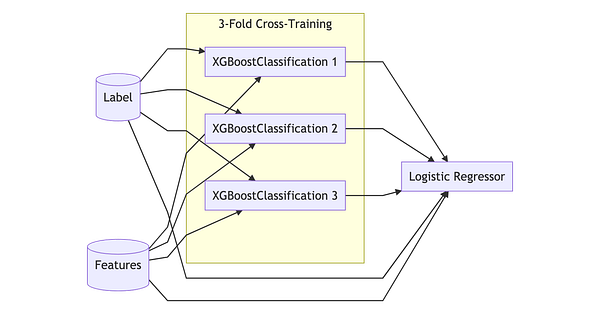☕️ 🕸 Deep Learning for Java and .NET Developers
Weekly newsletter that discusses impactful ML research papers, cool tech releases, the money in AI, and real-life implementations
📝 Editorial
The deep learning space is mostly a Python game. Python’s flexibility and mathematically intuitive syntax have made it a favorite language of AI researchers and technologists producing a large and diverse group of data science frameworks and technology stacks. So if you like Python, you can find many options to build deep learning solutions. But what about the rest of the programming languages? For decades, Java and .NET battled for a dominant position in the enterprise space, attracting millions of developers to their respective stacks. The developer market composition seems to indicate that deep learning platforms for Java and .NET could have a warm adoption.
In recent years, Java and .NET deep learning frameworks have fallen behind compared to Python alternatives. Stacks such as DeepLearning4J or ML.NET certainly have a strong community but remain second-tier compared to TensorFlow and PyTorch. Just like Google built TensorFlow and Facebook incubated PyTorch, the deep learning space needs contributions from some of the big Java and .NET technology shops. Well, we might be getting there. In recent weeks, two new Java-based deep learning frameworks have been released. LinkedIn recently open-sourced Dagli just a few weeks after Oracle released Tribuo. This type of effort will help increase diversity and innovation, hopefully attracting a new wave of developers into the deep learning space.
What do you think? Does the market need more Java and .NET deep learning frameworks? Share your thoughts using the comments section of this newsletter.
🔺🔻TheSequence Scope – our Sunday edition with the AI industry’s development overview – is free. To receive high-quality educational content every Tuesday and Thursday, please subscribe to TheSequence Edge 🔺🔻
🗓 Next week in TheSequence Edge:
Edge#39: the concept of memory in deep learning models; DeepMind’s Compressive Transformer; Hugging Face Transformer Library.
Edge#40: a deep dive into one of the most groundbreaking papers that challenges some principles of AI systems, in terms of how to measure intelligence.
Now, let’s review the most important developments in the AI industry this week.
🔎 ML Research
The ML Behind Hum to Search
Google Research published some details behind the machine learning methods powering its popular Hum To Search service, which allows you to find songs based on hummed melodies ->read more on Google Research blog
Alexa to Predict Customer Goals
Amazon Research published an insightful blog post detailing some methods used in Alexa to predict customer goals ->read more on Amazon Research blog
Objectron Dataset
Google published the details behind Objectron, a new dataset that advances research in image recognition in videos ->read more on Google Research blog
🤖 Cool AI Tech Releases
PyTorch in Android
The Android team unveiled a new version of its Neural Network API with support for PyTorch mobile ->read more on the Android team's blog
SingularityDAO
SingularityNet launched SingularityDAO, a new platform that brings AI to the world of decentralized finance (DeFi) ->read more on SingularityNet blog
StatusCode
If you’re also interested in following the biggest developments in the software development industry and ops space from a developer point of view, consider StatusCode ->our friends who create a weekly free digest for devs
💬 Useful Tweet
Dagli
LinkedIn open-sourced Dagli, a framework that simplifies the implementation of machine learning models in JVM languages. We will cover it in Edge#42


💸 Money in AI
AI-based voice assistant Voca.ai is acquired by Snapchat for $70 million. Using end-to-end speech neural models in its Virtual Agents, Voca helps companies automate a large number of conversations. These agents literally speak to the clients, who, according to company claims, find it hard to notice the difference.
Wearable devices startup Kinetic raised $11.25 million in funding. The sensors from a hip device detect all sorts of activities, then algorithms analyze which of them could cause injury. It also reacts when two people with devices are within six feet of each other. If you are interested in sensor-equipped devices and analysis of that type of data, check new research by the University of Cambridge and Alan Turing Institute, in which they propose the first multimodal self-supervised method for behavioral and physiological data, with implications for large-scale health and lifestyle monitoring.
Oncology real-world analytics platform Cota Health raised $10 million. Organizing fragmented real-world data from similar patient cohorts, it helps gain insights into cancer treatments and variations in care delivery.
Email automation startup OthersideAI raised $2.6 million in its seed round. The team took OpenAI’s GPT-3 language generation engine and built it into a product: you feed your bullet-point list to the system and it creates full, personalized emails. To try it, you needto join a waiting list.
Interested in sponsoring TheSequence? Let us know by replying to this email.
TheSequence is a summary of groundbreaking ML research papers, engaging explanations of ML concepts, exploration of new ML frameworks, and platforms. It also keeps you up to date with the news, trends, and technology developments in the AI field.
5 minutes of your time, 3 times a week– you will steadily become knowledgeable about everything happening in the AI space.

